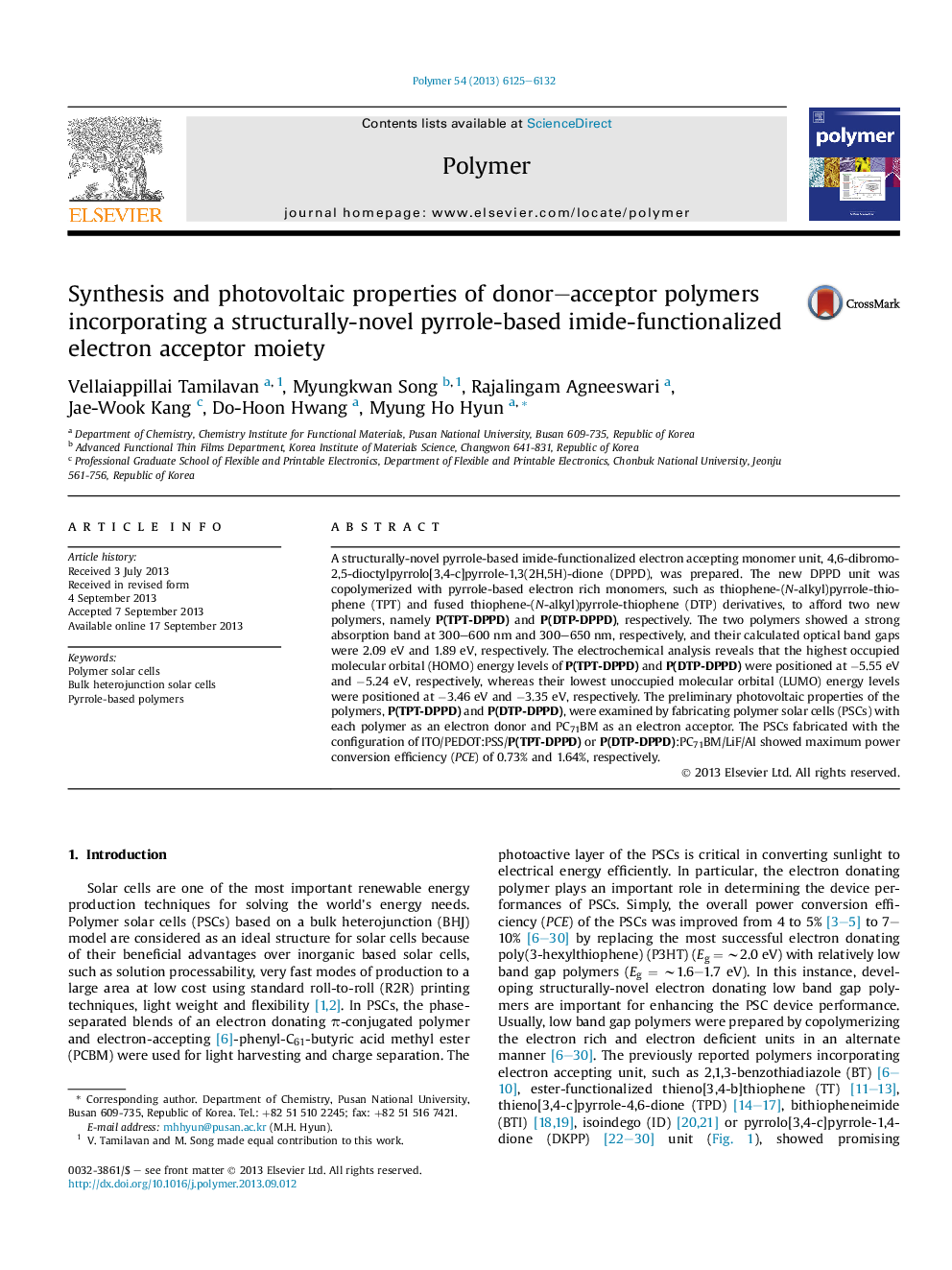| Article ID | Journal | Published Year | Pages | File Type |
|---|---|---|---|---|
| 5181558 | Polymer | 2013 | 8 Pages |
A structurally-novel pyrrole-based imide-functionalized electron accepting monomer unit, 4,6-dibromo-2,5-dioctylpyrrolo[3,4-c]pyrrole-1,3(2H,5H)-dione (DPPD), was prepared. The new DPPD unit was copolymerized with pyrrole-based electron rich monomers, such as thiophene-(N-alkyl)pyrrole-thiophene (TPT) and fused thiophene-(N-alkyl)pyrrole-thiophene (DTP) derivatives, to afford two new polymers, namely P(TPT-DPPD) and P(DTP-DPPD), respectively. The two polymers showed a strong absorption band at 300-600 nm and 300-650 nm, respectively, and their calculated optical band gaps were 2.09 eV and 1.89 eV, respectively. The electrochemical analysis reveals that the highest occupied molecular orbital (HOMO) energy levels of P(TPT-DPPD) and P(DTP-DPPD) were positioned at â5.55 eV and â5.24 eV, respectively, whereas their lowest unoccupied molecular orbital (LUMO) energy levels were positioned at â3.46 eV and â3.35 eV, respectively. The preliminary photovoltaic properties of the polymers, P(TPT-DPPD) and P(DTP-DPPD), were examined by fabricating polymer solar cells (PSCs) with each polymer as an electron donor and PC71BM as an electron acceptor. The PSCs fabricated with the configuration of ITO/PEDOT:PSS/P(TPT-DPPD) or P(DTP-DPPD):PC71BM/LiF/Al showed maximum power conversion efficiency (PCE) of 0.73% and 1.64%, respectively.
Graphical abstractDownload full-size image
